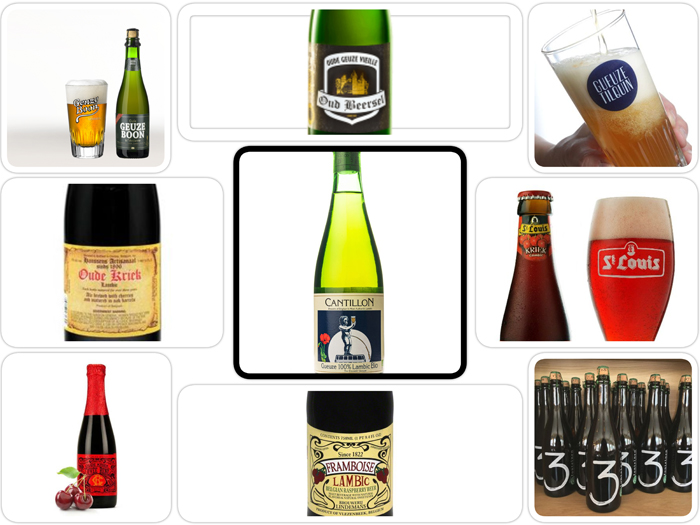Lambic and Gueuze
Introduction – by Firkin Ron
The term beer style refers to a broad set of descriptors used to differentiate and categorize types of beers. Descriptors such as color, flavor, strength, ingredients, production method, recipe, history, and origin create the framework for establishing a beer style.
And almost any time you buy a beer, the beer lists its style on the packaging. Why? To provide the buyer with a basic preview and understanding of the beer’s look, smell, taste and drinkability.
Today there are hundreds of documented beer styles. Furthermore, a handful of organizations created their own unique classifications. However, the Beer Judge Certification Program (BJCP) provides one of the most commonly used set of style guidelines.
This week’s beer style overview features Lambic and Gueuze (also spelled Geuze). To many craft beer lovers, the unique complexity and funky flavors of Lambic offer an unparalleled drinking experience. And to properly shepherd this spontaneously fermented beverage from infancy to a delicious work of drinkable art requires tremendous skill. Moreover, the peak of this artful skill is making Gueuze (pronounced with a hard ‘g’ and rhymes with ‘firs’).
Lambic and Gueuze – by Owen Ogletree
This ancient style of ale that’s mostly made around Brussels starts life as a wheated pale ale made with a massive load of aged hops that provides protection against inappropriate microbes, without adding much hop flavor or bitterness. The hot wort is laid out in shallow vessels in the winter and allowed to cool and mix with wild yeast and bacteria in the outside air. The young beer spontaneously ferments in oak barrels, resulting in a balanced sour ale that offers amazing notes of horse blanket, farmyard, dry sherry, leather and fruity esters.
Young Lambic is often blended with aged Lambic to produce a sparkling version known as Gueuze. Whole raspberries, cherries and other fruits can be added to fermentation barrels to create delightful fruited examples. Lambic can be an acquired taste, so some bottled versions available in the USA have unfortunately been heavily sweetened and pasteurized. Look for bottles with “Oude” or “Oud” on the label, signifying a traditional, tart Lambic. Uncomplicated kettle-soured ales that are currently popular in the USA can’t begin to match the complexity of an Oude Gueuze.
About Owen Ogletree
Owen is founder/editor of Brewtopia LLC. In addition, he is columnist for Southern Brew News and Beer Connoisseur Magazine, lecturer at Knoxville’s Brewing & Distilling Center, founder/director of the Atlanta Cask Ale Tasting and Classic City Brew Fest, and a BJCP National Beer Judge. Owen has also served as a beer judge at the Great American Beer Festival and the Great British Beer Festival.
